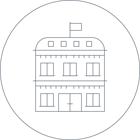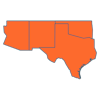
Learn More
About the Project
Educators have been shaping learning experiences to answer the distinctive needs of individual students for years. And, whether you call this practice personalized learning, individualized instruction or differentiation, it continues to ignite hopes that education can meet the needs and realize the goals of each and all learners.
But hope needs fuel. To encourage agency, build resilience, close learning gaps and improve student outcomes, hope can use a hand from data-driven solutions. That's where this site comes in.
To understand the matrix of factors that make each student unique and determine how best to support that student's goals calls for a deep understanding of the classroom community. It requires an often lengthy and demanding period of investigation and experimentation matching diverse needs, goals and resources. And this complex, exacting and critical process yields a panoply of innovative approaches.
EdSurge has interviewed nearly 350 schools and held close to 50 town halls to unearth evidence around how practitioners across the country tailor different learning experiences. We want to surface these efforts so that schools and districts can discover how their peers are working to translate a vision of personalized learning into practice. It's our hope that educators will use this site—and the accompanying collection of stories—to explore ways to help students thrive.
Please contact research@edsurge.com if you have any questions, or if you would like any further information.
Research Methodology
This research project analyzed qualitative data to increase evidence of how schools think about personalized learning and what it looks like in practice.
We sought to address four research questions:
- What characterizes a personalized learning student experience?
- Which instructional and structural strategies do schools and districts use to support personalized learning?
- Which technologies do schools and districts use to support personalized learning?
- Which challenges do schools and districts face when transitioning to personalized learning environments?
To accomplish this we gathered a qualitative dataset that combined 50 narratives written by educators with 125 profiles of schools and districts and 125 reports compiled from working directly with edtech administrators; created a tagging schema to spotlight personalized learning characteristics and pathways; and coded and analyzed the dataset to pinpoint emerging concepts informed by our four research questions.
This approach has several benefits.
Researchers tend to focus on the tactics of a limited number of schools that adopt highly innovative learning models tailored to their specific student communities. Expanding available evidence of how schools implement personalized learning opens doors to more options for more schools—and the students they serve.
Moreover, classic comparative analysis research can take years; it’s not unusual for a school’s vision and approach to evolve during the course of a study. That means that the work going on to develop rapid-cycle evaluation approaches is crucial.
Mining existing secondary data also makes the process of collecting data less onerous for schools. It reduces demands on their time, attention and resources.
Disclosure
This project is made publicly available with support from the Bill & Melinda Gates Foundation. All content on this website was generated independently by EdSurge, and EdSurge retains sole editorial control and responsibility for that content.
Four tags included in the schema are based upon the LEAP Learning Framework™ by LEAP Innovations ®.
Acknowledgements
EdSurge has chronicled the evolution of personalized learning for several years. Beginning in October 2016 we dove more deeply into researching, analyzing and reflecting on personalized learning, including how schools and districts interpret it and put the term into practice. As part of this research, we developed a tagging schema to identify the most frequently used words and phrases around personalized learning.
We are grateful to the more than 30 educators, administrators, consultants, and researchers who graciously shared their time with us. Their level of knowledge about what students need and how they learn, as well as their general enthusiasm on the topic helped shape the tagging schema in major ways.
Additionally, we’d like to acknowledge the EdSurge staff who had a hand in coding the qualitative content and crafting the report, including Meg Hamel, Marisa Kaplan, Laurie Seider, Alex Sigillo and Elsie Simpliciano, and in designing and developing this interactive resource, including Fiona Miller, Brian Simmons and Agustin Vilaseca, as well as Gaspar Tovar from Moove-It and the FiveStone team.




